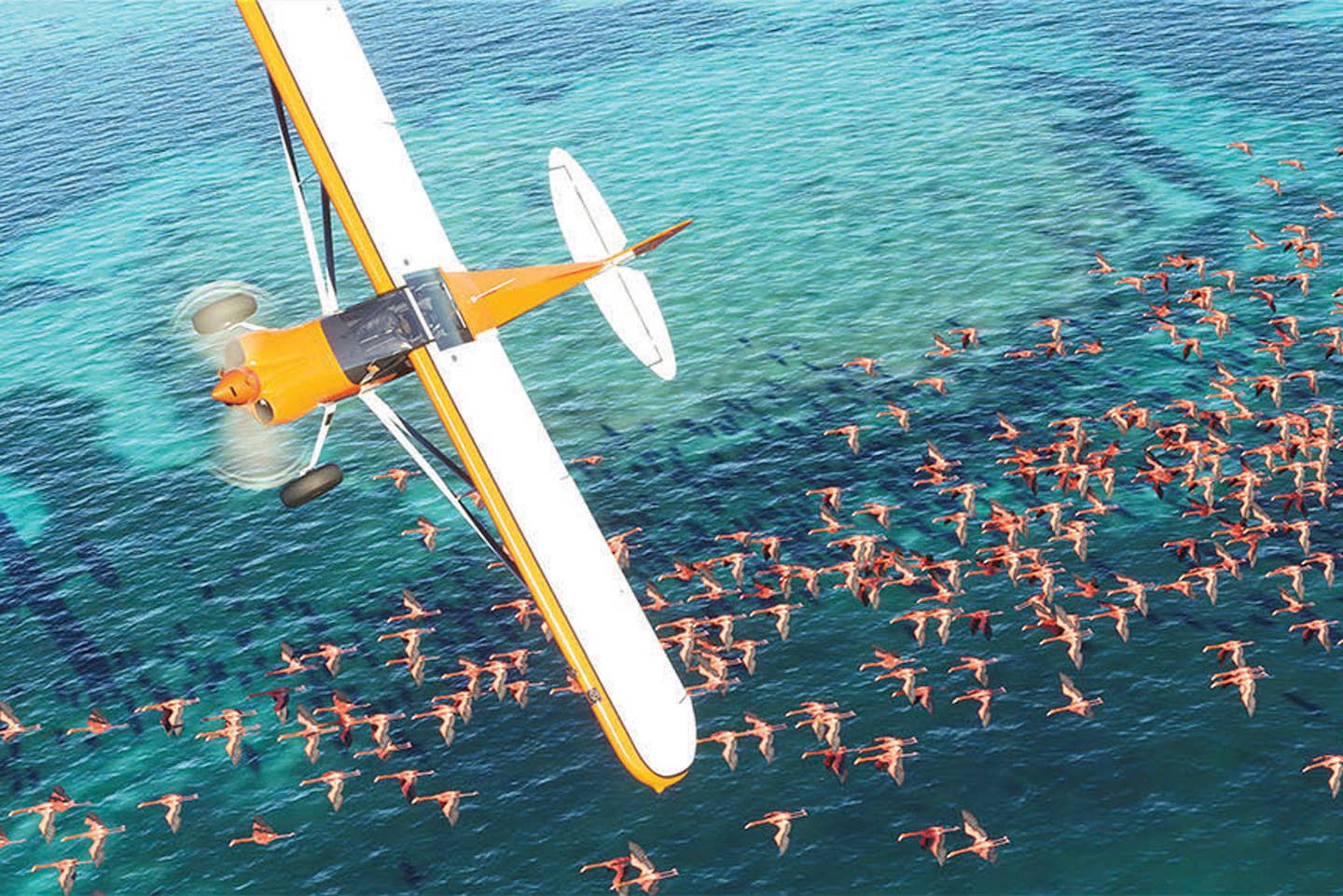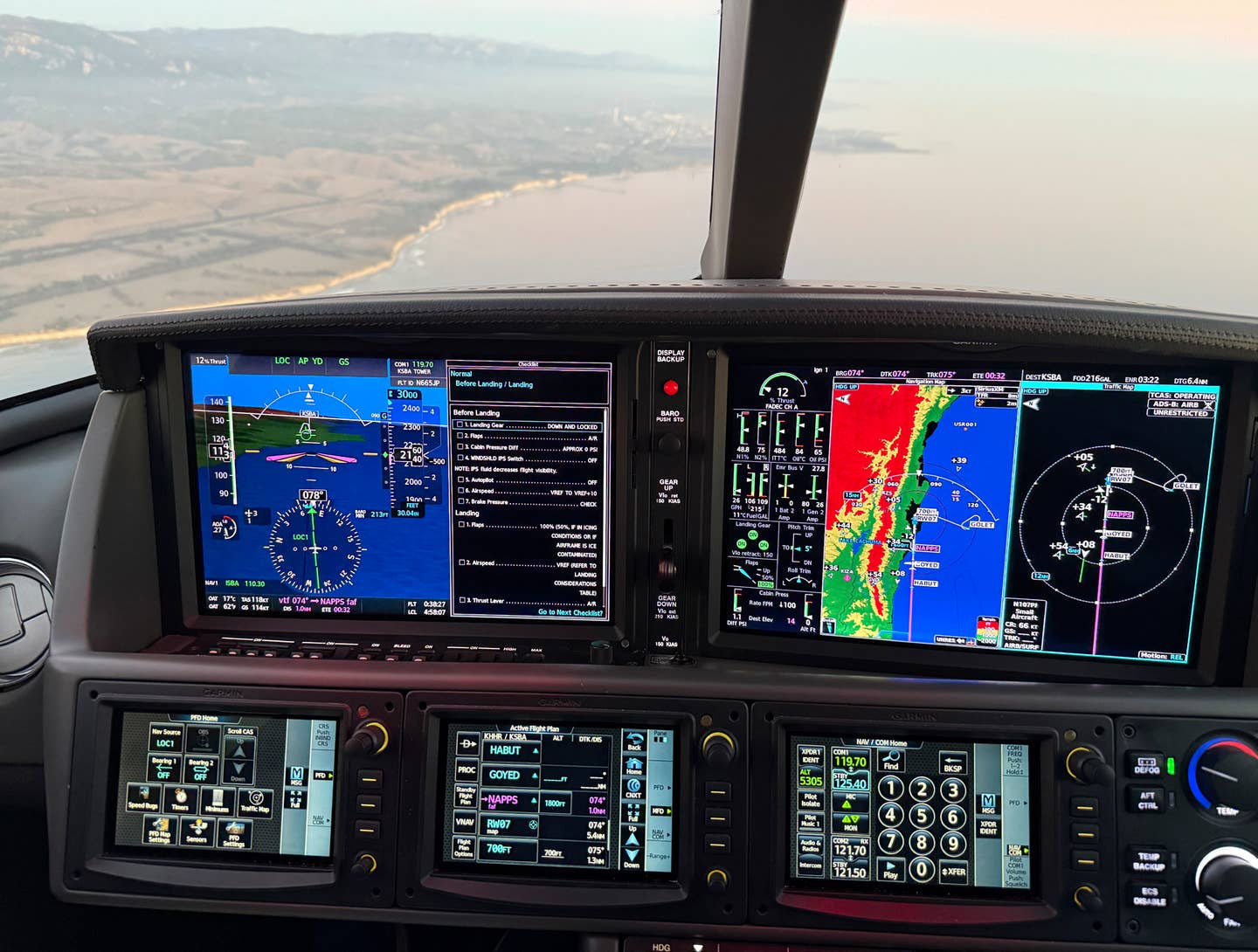
The 2020 version of Flight Simulator offers intensely detailed scenery and aircraft modeling, delivering an experience that is no longer gamelike. Courtesy Microsoft
Did you ever fly out of Meigs Field in downtown Chicago before it closed? It’s one of those airports you will never forget—if you were lucky enough to visit before the painful closure in 2003. But ask just about any pilot today who learned to fly in the late 1990s or early 2000s, and memories will flood back to the view from the departure end of Runway 36 at KCGX—preparing for takeoff in Microsoft Flight Simulator. For many, including me, this was the first introduction to the excitement and freedom of general aviation.
After mastering the traffic pattern over Lake Michigan and buzzing the Hancock building and Sears Tower, it was only natural to switch over to Patty Wagstaff’s Extra 300S and fly the BFGoodrich-sponsored aerobatic airplane for some high-performance inverted maneuvers. Most of us had no idea what we were doing, but thanks to an inexpensive yoke or joystick and the family computer, we learned more about airplane control, flight instruments and aerodynamics than we likely realized at the time.
There’s no question that the countless hours of joyriding around the US in Flight Simulator led me to choose a career path in aviation. And I can say for a fact that the experience and knowledge indirectly gained from manipulating the controls of the Cessna 172 and studying the instrument panel trimmed off more than a few hours of the time it took to earn my private pilot certificate in 2000.
Over the last 10 to 15 years, though, it seems like flight simulators lost their magic. The simulators of the past decade are as technically accurate as it gets and allow you to flip every last switch in an Airbus or King Air cockpit, but they feel more mechanical and don’t have the “it” factor that the original Flight Simulator offered.
Change is in the air, though. Microsoft recently debuted an all-new version of Flight Simulator, and it’s hands-down the most capable and inspiring version yet in the product’s 38-year history. The unparalleled visuals incorporate more than two petabytes of satellite and 3D photogrammetry data to show the world in detail never seen before.
The scenery is a big part of why the new Flight Sim delivers the “it” factor aviation enthusiasts crave. At Sporty’s, we regularly fly to regional airport diners for $100 pancakes at sunrise before the workday begins, and there’s an unwritten rule to stay below 1,000 feet agl in an effort to appreciate the journey. The new edition will allow future pilots to experience that same feeling from home.
The development team spent countless hours creating detailed airplane models, instrument panels and aerodynamics. You can fully interact with air traffic control, fly alongside real-time traffic with data from FlightAware, and enable real-time weather data. It’s not the game experience offered by the company’s 2012 release, Microsoft Flight.
Read More from Bret Koebbe: Pilot’s Discretion
Today, it’s never been easier or more affordable to outfit your home flight sim right from the start with a full set of controls, including yoke, throttle and rudder pedals. One company leading the way with innovative new hardware is Honeycomb, which launched its first flight-sim yoke last year. Beyond looking flat-out cool, the Honeycomb Alpha yoke provides the best control feel of any on the market, thanks to roller-ball-bearing construction and freedom to bank a full 90 degrees. The company also has a throttle quadrant debuting later this year.
In addition to the standard flight controls, there are more advanced add-ons available, such as radio stacks, switch panels and fully functioning Garmin 430W accessories. These are broadening the appeal of next-generation home simulators beyond aviation enthusiasts, and are becoming a popular resource for existing pilots to help keep their flying skills sharp at home.
There will always be those who are quick to dismiss home simulators, viewing them as just a game. As a flight instructor, I see real value in practicing real-world scenarios with these systems, as long as you approach it with the right attitude. When practicing at home, here are a few suggestions for practice:
*VFR skill building: high-density-altitude takeoffs and landings, mountain operations.
*IFR proficiency: LPV approaches to minimums, holding-pattern practice, a zero-zero takeoff.
*Emergency procedure execution: engine failure after takeoff, electrical failure at night.
*EFB (mobile app) integration: nearest airport diversion, and practice using newly released features.
The fourth item in the list is something you’ll really want to practice across all the scenarios; you can connect your iPad to the sim and use it the same way for navigation as if you were in the airplane. This may provide the most value in a simulated environment, allowing you to think outside the checklist to better handle simulated emergencies. And thanks to the option to fly in real-time weather, you can practice simulated flights in conditions that might normally push your personal minimums.
In the long run, the new Flight Sim’s fun factor might be its biggest contribution to the aviation community, introducing general aviation to today’s youth (and those young at heart) to inspire them the same way flying out of Meigs Field did for my generation 25 years ago.
This story appeared in the November 2020, Buyers Guide issue of Flying Magazine

Sign-up for newsletters & special offers!
Get the latest FLYING stories & special offers delivered directly to your inbox






